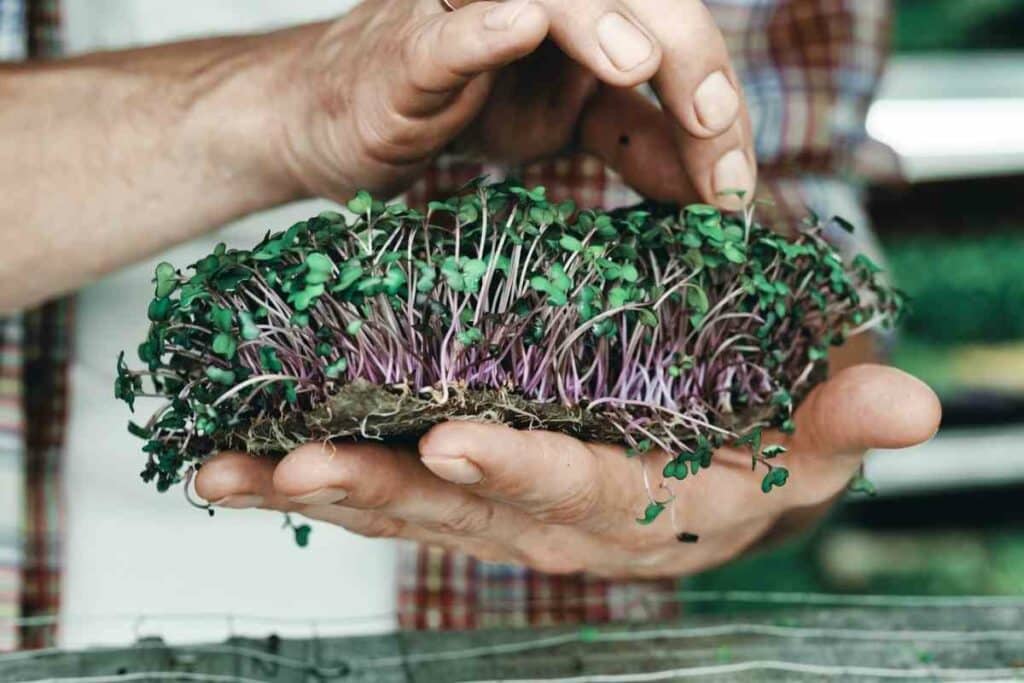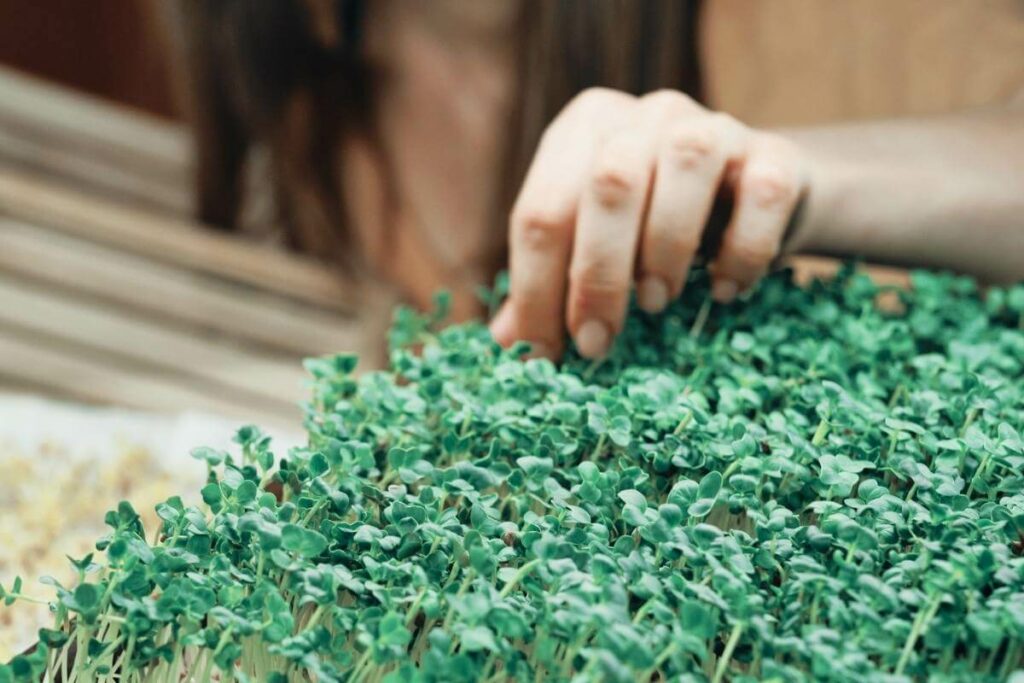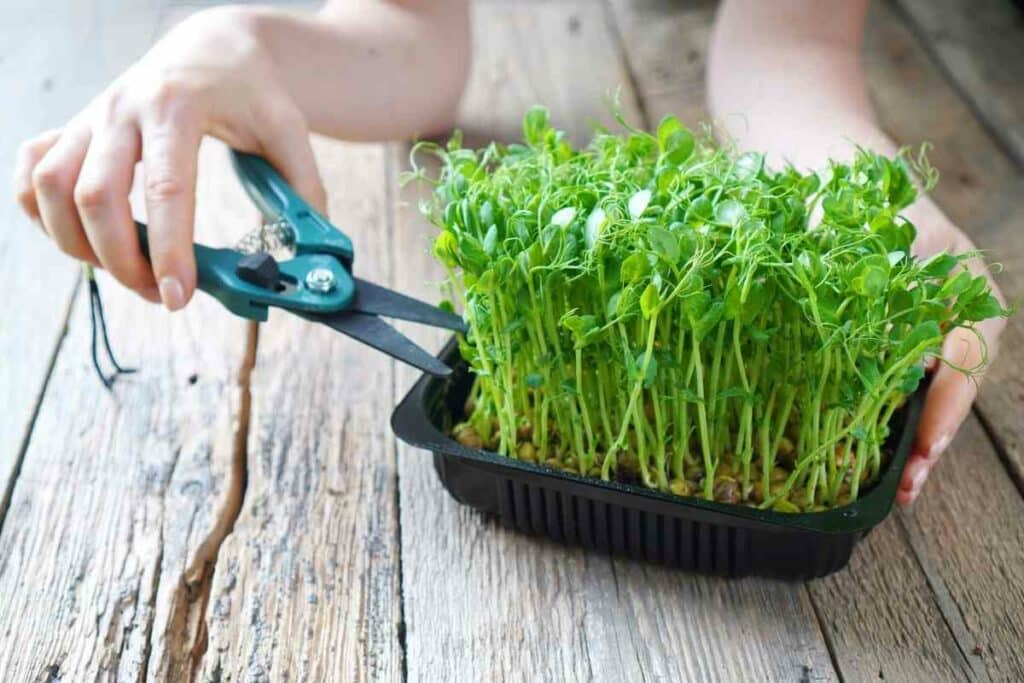Yes, microgreens can be grown to their full size if provided with the right conditions. When given ample space, soil, and nutrients, they can grow past their normal stage. However, it is difficult for them to grow to full-size plants since they are grown in environments that stress their growth.
Microgreens are micro herbs grown in soils around 2- 8 cm tall.
They are packed with a lot of nutrients and good flavors. Plants beyond 2 inches tall are not considered microgreens.
One should consume microgreens after sprouting before maturing to full-size plants.
You can yield them after they have developed their first leaves and small roots.
They have three parts:
- the stem
- young true leaves
- and the cotyledon leaves or leaf
You can easily grow microgreens; all you need is a tray, soil, and water to do so.
Conditions under Which You Can Grow Microgreens to Mature Plants
Different microgreens have different results.

Some of them will grow, some won’t. It also depends on how you perform your harvest and cutting activities.
The growing tip or the apical meristem is the leading cause for the growth of a baby plant.
If you cut just above the other set of leaves, you can revive the tips to grow back. You should note that this is not truly the case for grasses.
Your microgreens will have more nutritional value and flavor with the first cut and continue to take in the nutrients in the soil as they grow to full plants.
When the plant grows, the roots will grow tall and thicker and need more room to keep growing.
To keep growing, you will have to transplant them in:
- an open space (garden)
- or a deeper pot
While transplanting, you will have to cut the soils into cubes and plant them in deeper soil, water and let them grow to full-size plants.

Moving your microgreens to larger containers will help them develop a robust root system and produce high-quality mature plants for your garden.
The new container should be roughly double the size of the previous one to hold the required amount of water and soil nutrients for microgreens to continue growing.
Don’t Forget: Look out for enough sunlight and temperature requirements.
How Do Microgreens Grow Into Mature Plants from Seeds?
You can grow microgreens seeds into mature plants by placing organic soil uniformly in a tray:
- Soak the seeds in warm overnight to speed up the germination process and avoid scattering the seeds while planting.
- Spread seeds an inch over container soil and lay the top layer of thin soil.
- Water and place the pot near a source of sunlight or grow lights. Different lighting has an impact on their flavors.
- You should keep the soil moist by moistening the seeds and watering them daily to grow healthy and attain a good color.
Microgreens are ready to harvest after two to three weeks.
You should cut the stem by scissors or snip it just above the soil mix and wait for the third set of leaves during harvesting.
The second and third sets are named true leaves, while the first set is called seed leaves. Cut just above the other leaves and wait for the next leaves to grow from the true leaves.
Harvest after 2-3 weeks and cut the stems just above the lowest set of true leaves once more. Repeat this process until the microgreens are bitter and release them to seeds until they are well established (rooted).
Works Fine: Cut cube pieces out of the soil mix and roots, plant them on separate pots or in the garden, and water them for about 2 to 4 months.
Why It’s Difficult to Grow Microgreens into Mature Plants?
If you planted the seeds initially for the purpose of growing microgreens, the plants wouldn’t grow to maturity.

The amount of stress and the cutting method also determine whether the microgreens will die or not.
Microgreens are usually planted in a crowded space, meaning they have to compete for nutrients, making growing past their harvest stage difficult.
Little stress encourages the plant to grow, but if the pressure is extraordinary, this causes the plant to die.
Cutting microgreens has the same effect as not harvesting. If the stress is too much, the plant cannot overcome the situation and grow back.
When you add more nutrients, microgreens will still die.
| Advantages of growing microgreen to mature plant | Disadvantages of growing microgreen to full-size plant |
|---|---|
| You can harvest for a long time | When mature is bitter and tough |
| You get seeds that you can use to grow microgreens | It is expensive |
| Have fewer nutrients compared to microgreen |
The Drawback of Growing Microgreens into Full-size Plants
Full-size plants are more expensive to buy and grow.
Purchasing microgreens may appear to be pricey, but when you consider their advantages, it becomes worth it.
To grow full-size plants, you will also have to spend more water and other soil nutrients like fertilizer.
Additionally, full-size plants are less nutritious. Microgreens are nutrient-rich, containing up to twenty-five times as many nutrients as their more mature plant.
That means that any microgreens you harvest are comparable to twenty-five times their mature equivalents.
Few People Know: As the microgreens grow into plants, the percentage of nutrients reduces, flavors and texture tend to change, and the taste becomes bitter and tougher each time you harvest them.
Final Thoughts
We can conclude that microgreens can grow into plants if you intend to grow them to full size.
You just need to provide an environment that suits their growth, such as providing enough room for their development for them to grow to full size.
Most people grow them to mature plants for seeds. However, if the conditions don’t encourage their full growth, the microgreens will slowly die.
Most farmers prefer to harvest them while they are microgreens due to their nutritional pack, good texture, and taste rather than when they are mature bitter, and tough.


